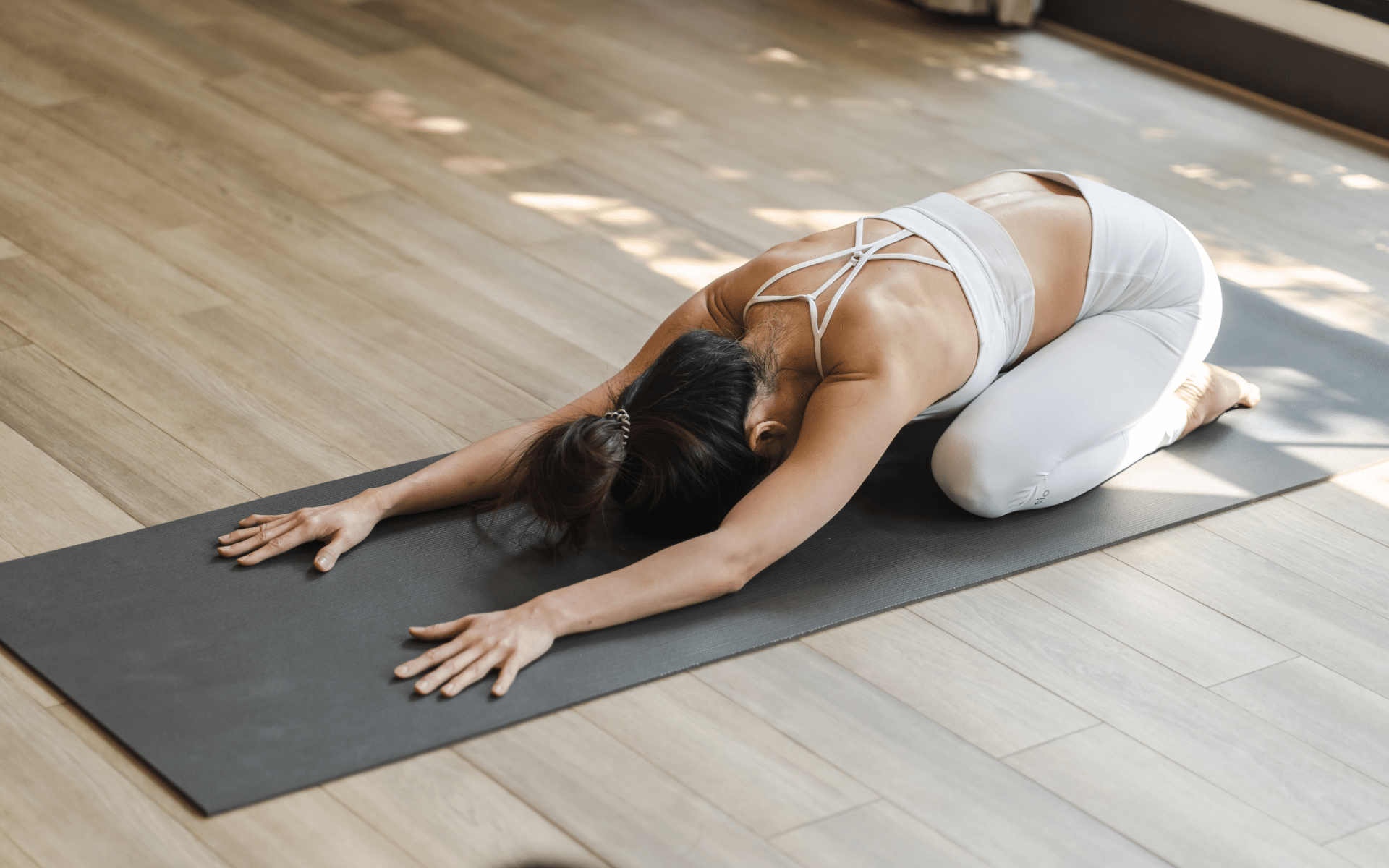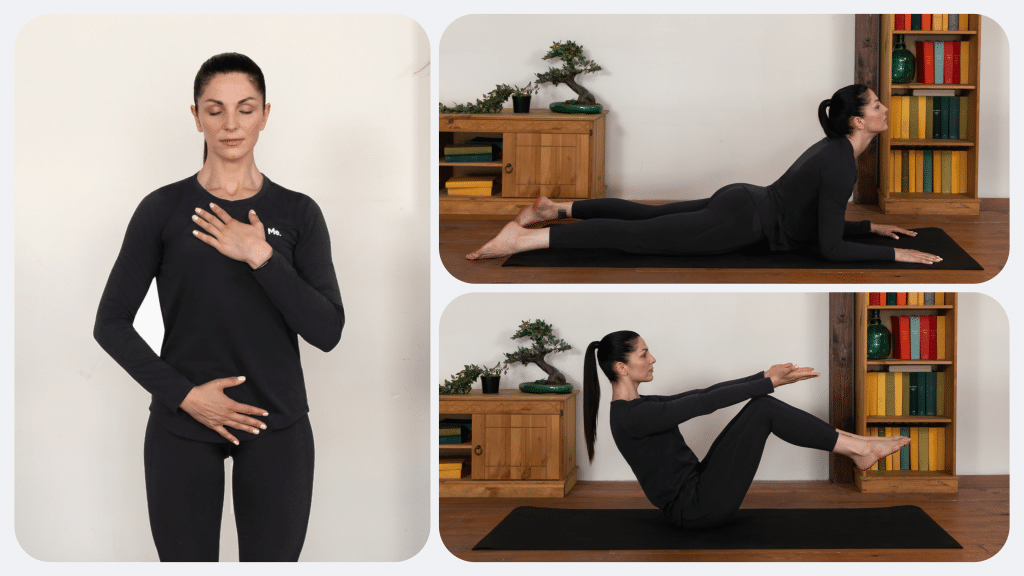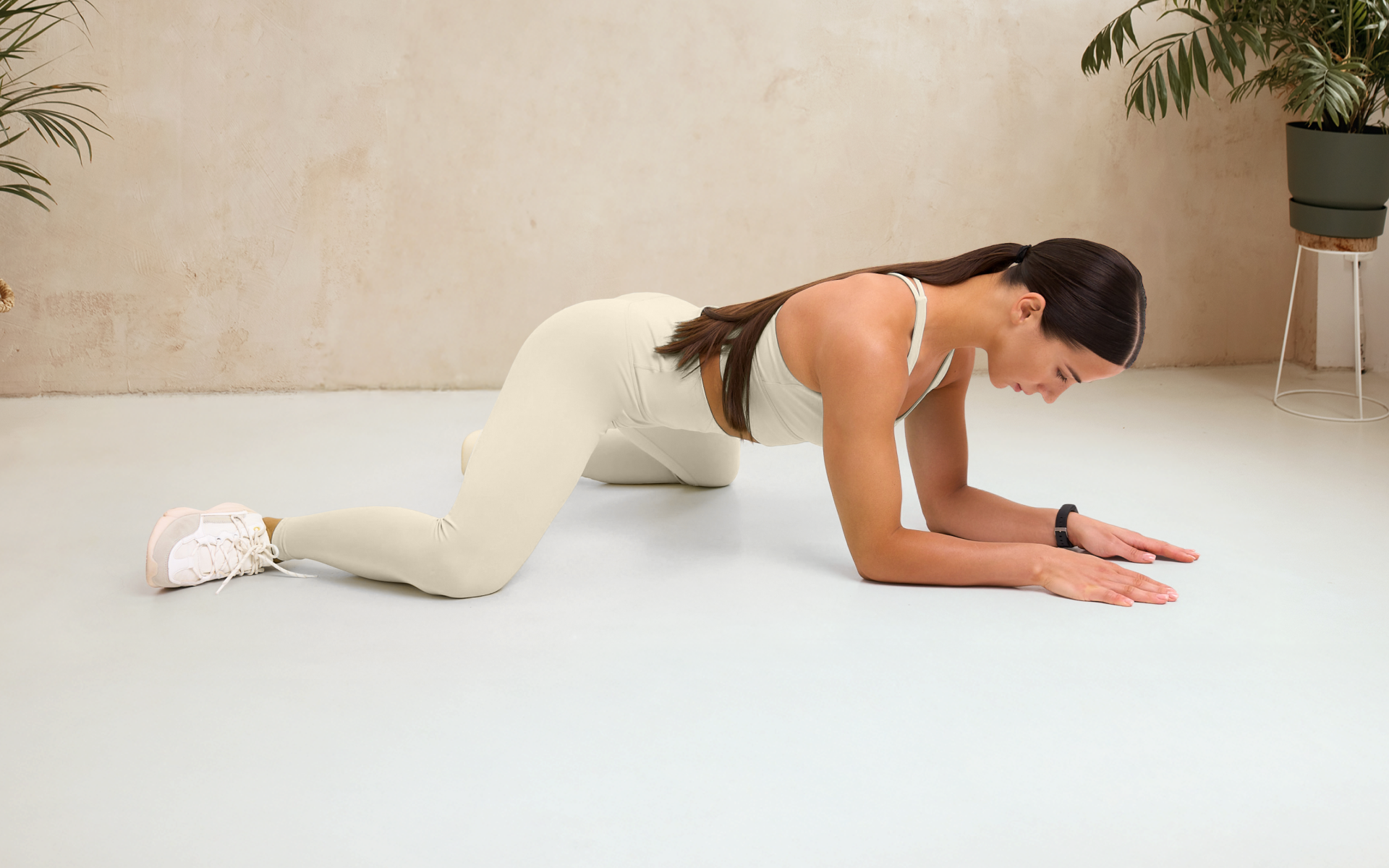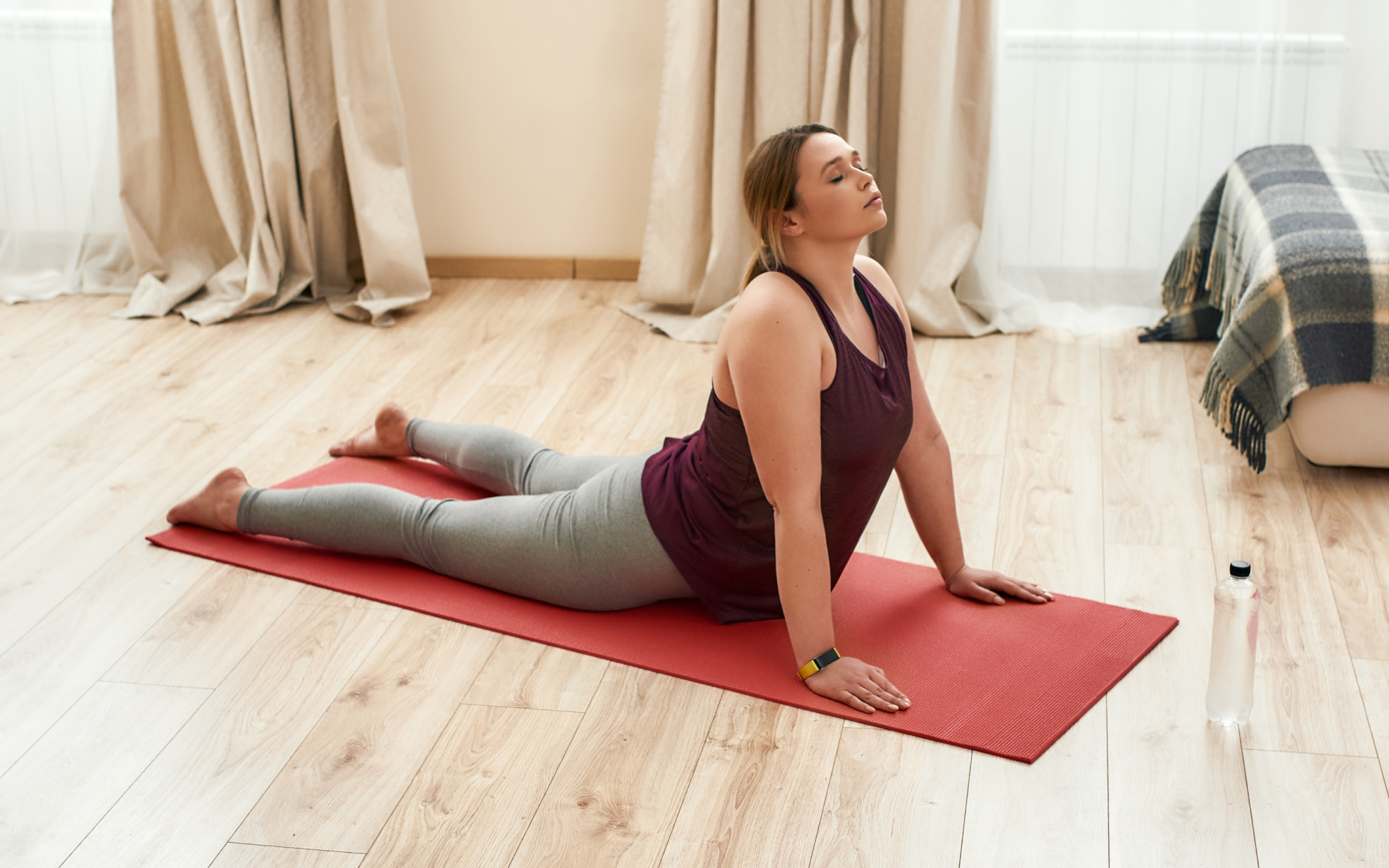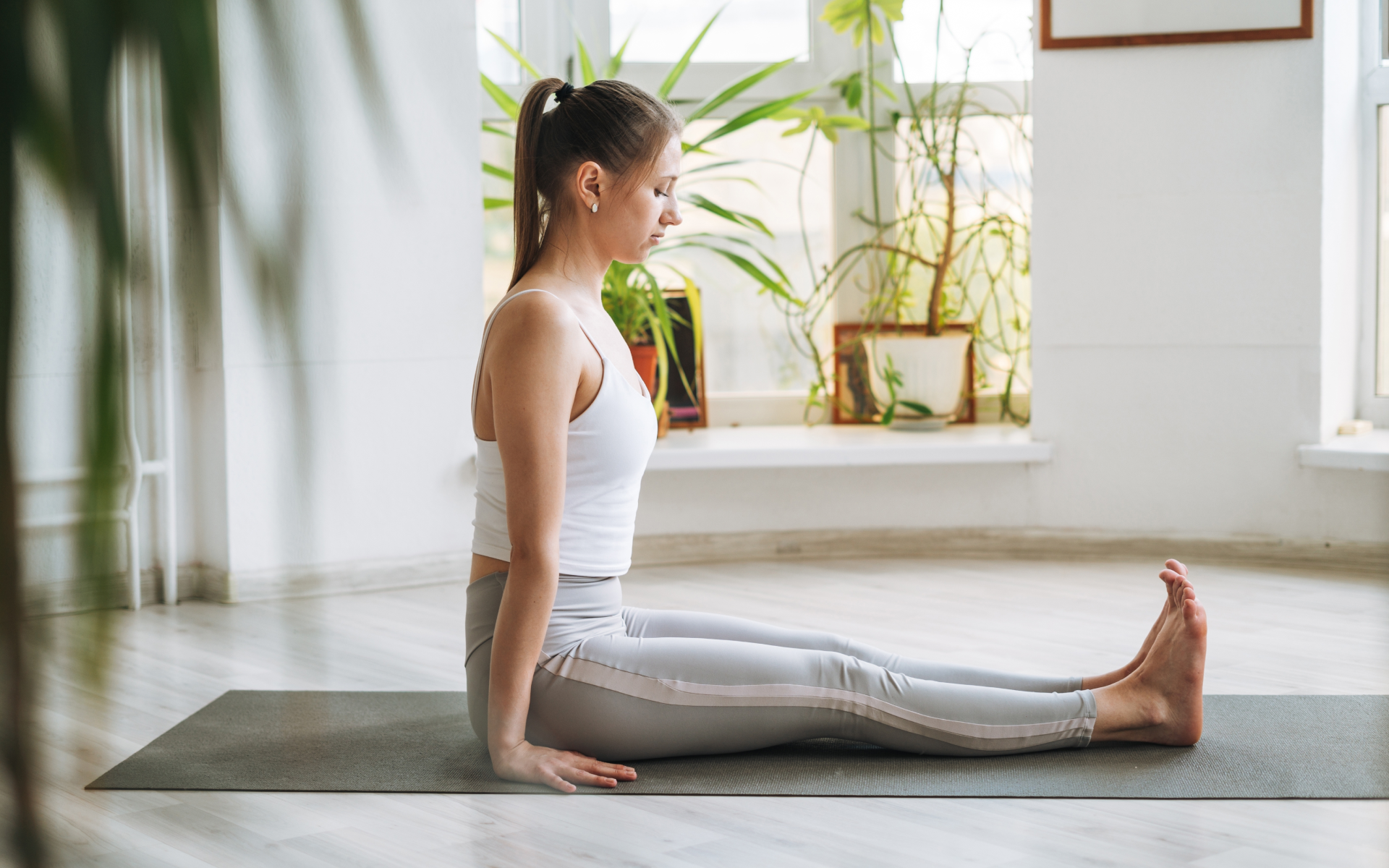Have you ever had a long, stressful day, and no matter how hard you try to relax, that tightness in your chest and shoulders refuses to budge? If so, you’re not alone.
Somatic stress release exercises target this very tension, which often builds up from emotional distress and leaves you feeling overwhelmed or out of touch with your mind and body. By improving this mind-body connection, somatic exercises can help build self-awareness, calm the nervous system, and bring you back into the present moment, helping you feel more relaxed and centered – both physically and emotionally.
This article dives deeper into what somatic stress release exercises are, the research and evidence backing them, and ways you can integrate them into your daily routine for better mental clarity, stress management, and overall well-being.
What Are Somatic Stress Release Exercises?
Somatic stress release exercises are body-based therapeutic movements that are designed to help strengthen the connection between your mind and body, offering a wide range of benefits for both physical and emotional well-being (1, 23).
By tuning into the physical sensations in your body during intentional movements, these exercises can help build greater self-awareness and mental clarity, potentially enabling you to better navigate life’s stressors and challenges with ease and resilience (2).
Rooted in the practices of somatic therapy, which utilizes the mind-body connection to address mental health concerns such as trauma (3), somatic exercises are often guided by these core principles (4, 5, 6):
- Mindfulness: Staying fully engaged in the present moment, which promotes a better sense of mental focus and calmness
- Gentle movement: Using slow, deliberate movements to release habitual physical and emotional tension while improving overall mobility
- Body awareness: Paying close attention to your internal bodily sensations and recognizing areas of tension, working consciously to release them
These principles serve as a foundation for most somatic exercises, helping bridge the connection between the mind and body in a safe, supportive way. With a wide variety of somatic therapy exercises available, remember that if one doesn’t resonate with you, it’s perfectly okay to explore other options until you find the right and comfortable approach.
Do Somatic Exercises Really Work? Research and Benefits
Originating from non-Western healing practices, somatic exercises have recently gained popularity around the world for their potential to help manage stress, improve mental clarity, and release tension both physically and emotionally (7).
Importantly, some somatic exercises have more research and scientific evidence, while others have limited studies backing their effectiveness. Based on currently existing research, here are the potential benefits observed from somatic exercises (5, 8, 9):
- Relief from built-up physical and emotional tension
- Alleviation of negative emotions such as anxiousness, worry, and distress
- Deeper understanding and awareness of one’s bodily sensations and emotions
- Potential for improved mobility and reduction in chronic pain
Somatic Exercises vs Somatic Therapy
While somatic exercises and somatic therapy share some commonalities, they serve distinct purposes and are practiced in different ways. Understanding these differences is the key to determining which approach best suits your individual needs and health goals.
Somatic exercises are typically self-guided and focus on managing everyday feelings of distress, worry, and overwhelm (1). These techniques are designed to help regulate the nervous system in the short term and bring you back into the present moment, helping you potentially clear mental fog and manage life stressors more effectively.
On the other hand, somatic therapy is guided by a mental health professional who often specializes in trauma or somatic techniques (3, 10). In addition to talk therapy, it often uses somatic exercises in a structured therapeutic setting to help you safely release deeply stored trauma and tension that may be contributing to feelings of emotional distress.
Many somatic exercises you encounter are likely rooted in somatic therapy practices. Therefore, it’s always best to speak with your primary care physician before you engage in even simple somatic exercises to ensure they’re right for you.
If you’re dealing with trauma or other mental health challenges, always consult a mental health professional. They can help develop a personalized plan that is tailored to your unique needs and life circumstances, while also providing ongoing support and guidance throughout your healing journey.
Are you in need of extra mental health support? The Psychology Today website offers a search feature to help you find nearby providers in your area (United States only).
Reasons why BetterMe is a safe bet: a wide range of calorie-blasting workouts, finger-licking recipes, 24/7 support, challenges that’ll keep you on your best game, and that just scratches the surface! Start using our app and watch the magic happen.
Where Is Trauma Stored in the Body?
The idea that trauma can be stored in the body stems from research that has linked emotional experiences to physiological or bodily manifestations (11).
Trauma leads to dysregulation in an individual’s psychobiological stress response. While symptoms and areas of physical tension or discomfort vary significantly from person to person, trauma is often associated with the following areas of the body (12):
- Hyperarousal in the chest and diaphragm, which potentially affects breathing
- Muscle tension that accumulates in the neck, shoulders, and other areas
- Increased feelings of numbness or disconnection from your entire body
These physical manifestations of trauma can persist over time if left unaddressed, and the symptoms can vary from person to person. This is the body’s unique response to trauma, which emphasizes the need for a personalized approach to healing. Fortunately, somatic exercises can be tailored to meet your individual health needs and goals.
How Do You Know Your Body Is Releasing Trauma?
Similar to how trauma affects people in different ways, releasing trauma can also feel different for everyone. Some of the most common signs to look out for during or after somatic exercises include (13):
- A noticeable sensation of lightness or a feeling of calmness in your body
- Emotional release such as crying, hyperarousal, or a sudden wave of emotion
- Physical sensations such as tingling, warmth, or changes in muscle tension
- Changes in sleeping or eating patterns, as your body is adapting to disruptions of releasing negative emotions
Although these sensations vary from person to person, they often signal that your body is actively processing and letting go of stored emotional distress and trauma, which paves the way for greater emotional balance and resilience to navigate life’s stressors with ease.
For those who are struggling with intense trauma, it is highly recommended to work with a mental health professional who specializes in somatic trauma therapy. These experts provide ongoing support and guidance while also educating you on specific somatic exercises to release trauma safely and healthily.
Read more: Somatic Exercises for Releasing Grief
How to Get Started with Somatic Exercises
Starting a somatic exercise practice can feel like uncharted territory, particularly if you’re unfamiliar with the concept, but the good news is that somatic exercises are designed to be stress-free and approachable for everyone.
With the right guidance and preparation, you can start seamlessly integrating them into your daily routine to set the stage for better emotional and physical well-being.
Preparing for Somatic Exercise
To get the most out of your somatic exercise practice, it’s important to start with a solid foundation. As always, it’s important to consult and gain approval from your healthcare provider before you engage in any new type of therapy or exercise to ensure it’s right for your health needs and goals.
Once you’ve gotten the go-ahead from your physician, here are some additional tips you should consider to help you prepare:
- Create a comfortable space: A quiet and clutter-free area without distractions, where you feel the most relaxed and undisturbed
- Add relaxing elements: Soft blankets, dimmed lighting, calming music, or even essential oils can help enhance feelings of relaxation
- Wear comfortable clothing: Opt for loose-fitting or stretchy clothes that allow for free movement while not restricting your body during exercises
- Set an intention: Before you start, take a moment to reflect on what you hope to achieve or release during the session, increasing self-awareness and focus
- Stay hydrated: Drinking water before and after the session, in addition to having a water bottle nearby, is essential to support your body’s needs
- Start small: Begin with short, simple exercises to ease yourself into the practice without feeling too overwhelmed
- Keep a journal nearby: Use a notebook to jot down any emotions, thoughts, or sensations that arise during your practice for better reflection and growth
In addition, it’s always important to learn the basics before you jump straight into any new exercise regimen. Familiarize yourself with the principles and techniques of somatic exercises by reading a guide, watching a tutorial, or speaking to your physician.
Remember: The BetterMe app is a valuable resource for finding more information, tips, and tutorials on somatic exercises and improving your well-being.
BetterMe: Health Coaching app helps you achieve your body goals with ease and efficiency by helping to choose proper meal plans and effective workouts. Start using our app and you will see good results in a short time.
Examples of Somatic Exercises for Releasing Stress
When you’re looking for somatic exercises to release emotions such as stress, trauma, and discomfort, it’s important to know that these techniques work differently for everyone. Therefore, it’s best to try out various methods of somatic exercise to find the one that feels best for you.
Here are some commonly used somatic stress release exercises you can consider trying:
- Body scanning: Slowly scanning your body from head to toe, noticing any areas of tension and consciously working to release them, encouraging relaxation (14)
- Grounding: Connecting your present self with external surroundings by either standing barefoot, running cold water over your hands, or other sensations to bring you back into the present moment and redirect your thoughts (15)
- Deep breathing: Inhaling fully through your nose and exhaling fully through your mouth to help calm the nervous system and reduce stress and anxiety (16)
- Somatic yoga: Combining mindfulness with gentle yoga movements to promote body awareness and breath control while releasing tension (17)
- Shake it out: Standing with your feet shoulder-width apart and gently ‘shaking out’ the tension from your arms, legs, and torso (18)
Can I Do Somatic Therapy on Myself?
While somatic therapy is typically guided by a mental health provider, certain somatic exercises can be practiced independently once you’ve consulted your physician and received their approval.
Somatic stress release exercises at home offer a convenient way to reduce tension and reconnect with your body in a comfortable, familiar setting. Creating a designated, safe space for these exercises can also help you establish a more consistent routine, which may help more quickly promote emotional and physical well-being.
If you’re new to somatic exercises, it’s important to start small. Somatic exercises for beginners often start with short sessions of body awareness practices such as mindful breathing or grounding techniques, which can be gradually increased in intensity and duration as you grow more comfortable.
Remember, developing the best somatic exercise program for your needs requires thoughtful planning and attention to your goals. Always focus on consistency rather than perfection, and be compassionate with yourself throughout the process.
Read more: What Is a Somatic Shoulder Release? Key Exercises for Releasing Emotions Stored in the Shoulders
Potential Side Effects of Somatic Exercises
Somatic exercises are generally safe, but it’s normal to experience certain emotional or physical sensations in response to letting go of built-up negative feelings. Here are some common side effects that may occur during or after somatic exercises, particularly if you’re dealing with a long history of pent-up stress, tension, or trauma (13):
- Emotional releases such as crying, laughter, or mood swings
- Mild physical discomfort in previously tense areas of your body
- Temporary feelings of fatigue or vulnerability as your body works through stored tension, trauma, and emotional distress
If any reaction feels overwhelming, pause the exercise immediately and consult your healthcare provider to get professional guidance. Remember, somatic exercises are meant to be stress-free and healing, so never proceed with them if they’re causing you feelings of discomfort and distress.
How often you engage in somatic exercises will be dependent on your personal needs, but consistency is always the key. For beginners, starting with two to three times per week can help build a strong foundation while allowing you to gradually increase the number of sessions over time if it feels right for you. The most important thing is to listen to your body – somatic exercises should always be relaxing, not forced. However, setting a schedule can help establish a routine when you’re just starting, which helps you reap the benefits of somatic exercises more quickly (19). Yes, Pilates is considered a somatic exercise when it’s practiced with a focus on the mind-body connection, often integrating elements of mindfulness and self-awareness techniques (20). However, some routines digress from the core principles of Pilates and focus on fitness or appearance-related goals instead, which are not considered to be somatic exercises. While morning sessions are ideal for somatic exercises, particularly if you’re only doing them once a day, the best time is ultimately dependent on what fits your schedule (21). The beauty of somatic exercises is that they can be done at any time of the day, which makes them a convenient way to relieve stress and other negative emotions as they arise. In fact, certain exercises such as deep breathing are meant to be practiced in moments of heightened stress or anxiety to help bring you back to the present moment (16). Engaging in somatic exercises may help lower cortisol, otherwise known as the stress hormone, particularly if they emphasize mindfulness and relaxation techniques (22).Frequently Asked Questions
How often should I do somatic exercises?
Is Pilates a somatic exercise?
What time of day is best for somatic exercises?
Do somatic exercises lower cortisol?
Although these effects differ from person to person, a consistent somatic practice can help improve stress management and reduce cortisol levels, but it’s most effective when combined with other healthy habits such as regular sleep and balanced nutrition.
The Bottom Line
Somatic stress release exercises can be an effective way to reconnect with your body and release stored tension. Whether you’re just starting out or looking to expand your practice, it’s important to approach these exercises with patience and consistency. Start small, listen to your body, and gradually build a routine that works for you.
For more resources on somatic exercises and stress management, the BetterMe app is a great tool to guide you along your journey toward better well-being.
DISCLAIMER:
This article is intended for general informational purposes only and does not serve to address individual circumstances. It is not a substitute for professional advice or help and should not be relied on for making any kind of decision-making. Any action taken as a direct or indirect result of the information in this article is entirely at your own risk and is your sole responsibility.
BetterMe, its content staff, and its medical advisors accept no responsibility for inaccuracies, errors, misstatements, inconsistencies, or omissions and specifically disclaim any liability, loss or risk, personal, professional or otherwise, which may be incurred as a consequence, directly or indirectly, of the use and/or application of any content.
You should always seek the advice of your physician or other qualified health provider with any questions you may have regarding a medical condition or your specific situation. Never disregard professional medical advice or delay seeking it because of BetterMe content. If you suspect or think you may have a medical emergency, call your doctor.
SOURCES:
- Somatic Education: Gentle Exercises for Easier Movement (2009, tandfonline.com)
- Somatic Practices: Going Beyond the Classroom to Build Resilience and Gain New Insights (2020, liebertpub.com)
- Somatic experiencing – effectiveness and key factors of a body-oriented trauma therapy: a scoping literature review (2021, nih.gov)
- Mindfulness Interventions (2017, annualreviews.org)
- Moving With Pain: What Principles From Somatic Practices Can Offer to People Living With Chronic Pain (2021, frontiersin.org)
- Body Awareness: a phenomenological inquiry into the common ground of mind-body therapies (2011, link.springer.com)
- Somatic Practices and Dance: Global Influences (2022, embodiedphilosophy.com)
- The Evaluation of a Mind/Body Intervention to Reduce Psychological Distress and Perceived Stress in College Students (2010, tandfonline.com)
- Mind–Body Therapies for the Management of Pain (2004, journals.lww.com)
- Mind-Body Interventions for Anxiety Disorders: A Review of the Evidence Base for Mental Health Practitioners (2021, psychiatryonline.org)
- The body keeps the score: memory and the evolving psychobiology of posttraumatic stress (1994, nih.gov)
- Trauma and the Body (2021, link.springer.com)
- Signs Your Body is Releasing Trauma (2024, integrativelifecenter.org)
- The effects of body scan meditation: A systematic review and meta-analysis (2022, nih.gov)
- Grounding Techniques to Help Control Anxiety (2022, hr.jhu.edu)
- Breathing Practices for Stress and Anxiety Reduction: Conceptual Framework of Implementation Guidelines Based on a Systematic Review of the Published Literature (2023, nih.gov)
- Everything You Need to Know about Somatic Yoga (2024, health.com)
- Therapeutic Tremoring – Shake Off Stress And Trauma (2018, pacesconnection.com)
- Suggested Schedule for Doing Somatic Exercises (n.d., somatics.org)
- Pilates, mindfulness and somatic education (2013, intellectdiscover.com)
- The Daily Somatic Essentials: The somatic solution to staying flexible and fit. (n.d., somatics.org)
- Effectiveness of stress management interventions to change cortisol levels: a systematic review and meta-analysis (2023, sciencedirect.com)
- Try These Somatic Exercises to Improve Your Mental Health (2024, charliehealth.com)
